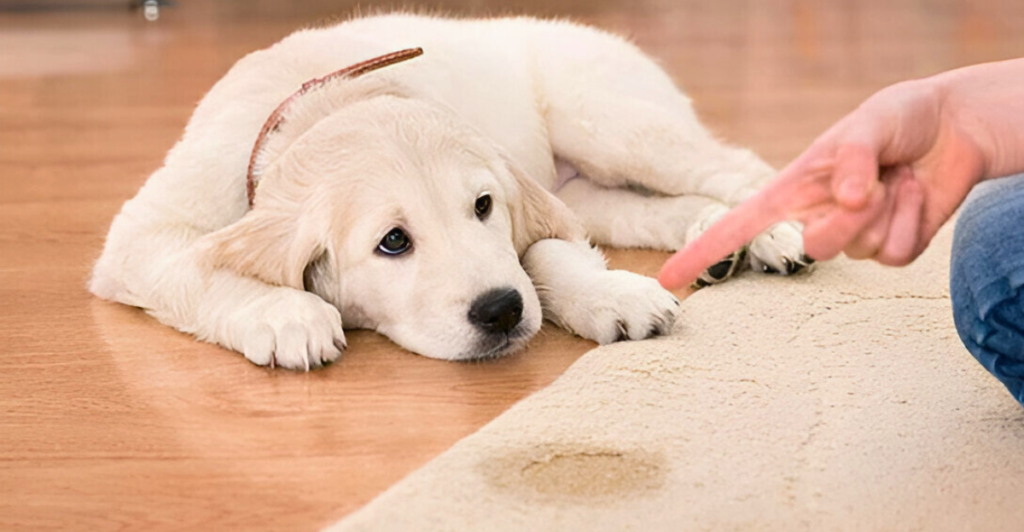
Getting a new puppy can be exciting and overwhelming, and most owners choose to start with training immediately. The first week is crucial for setting the foundation for good behavior and a strong bond between you and your furry friend. Avoiding common mistakes during this period can make all the difference in your puppy’s training journey.
1. Inconsistent Potty Training
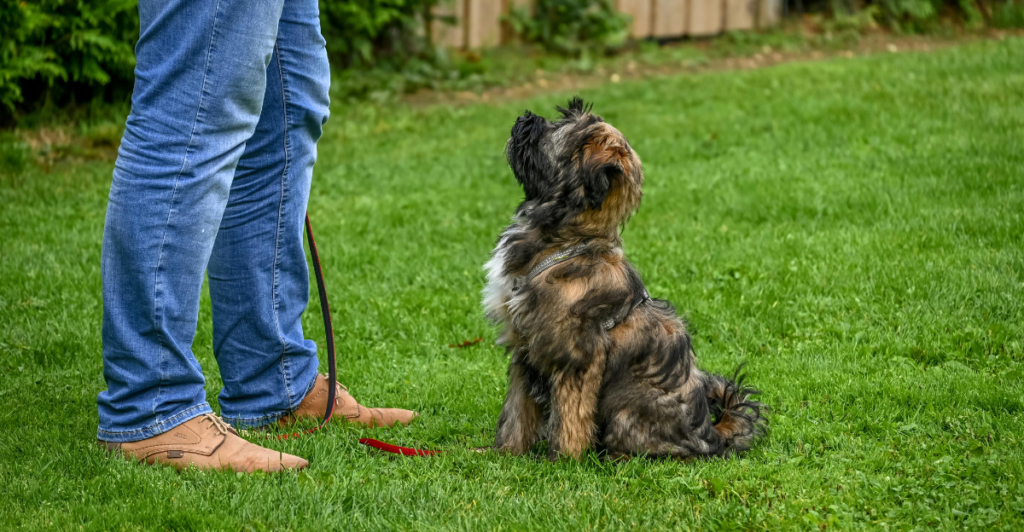
Potty training is usually one of the first things you want to teach your pup to keep your home mess-free. Inconsistent potty training is one of the most common mistakes new puppy owners make, and it can significantly delay your pup’s progress. Puppies thrive on routine, so failing to establish a consistent schedule can lead to confusion and accidents.
For practical potty training, take your puppy outside at regular intervals, such as after waking up, eating, drinking, or playing, and reward them immediately as soon as they’re done. When they have the occasional accident, they handle the situation calmly to avoid creating fear and anxiety around potty training.
2. Improper Crate Use
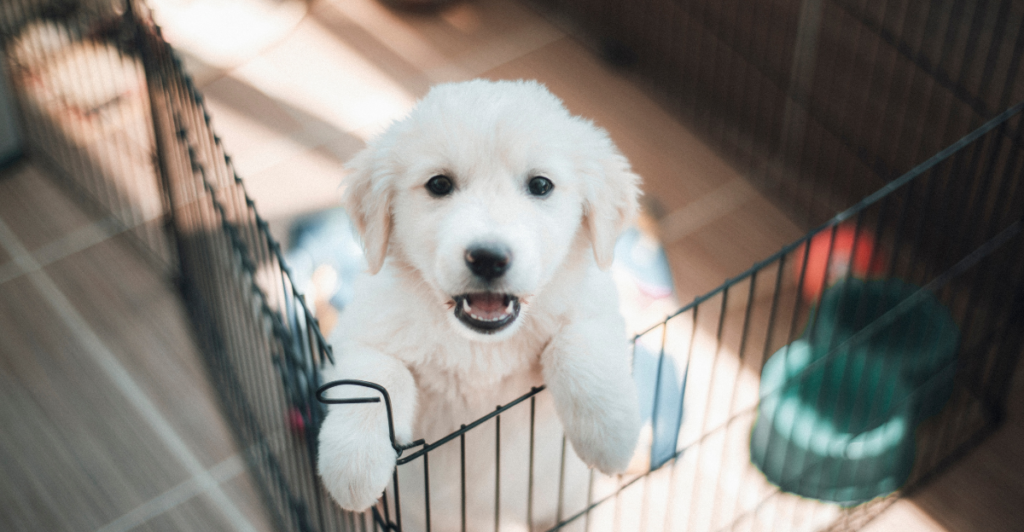
Some owners prefer to use a crate to keep their pups safe while away or have a safe space. One common mistake is using the crate as punishment, making your puppy fear the space instead of seeing it as a safe and comforting environment. On the other hand, leaving your puppy in the crate for too long can lead to stress, accidents, and behavioral issues.
Try focusing on making the crate a positive place by introducing it gradually with treats, toys, and praise. Ensure the crate is comfortable, appropriately sized, and used for short periods to help your puppy feel secure.
3. Training for Too Long
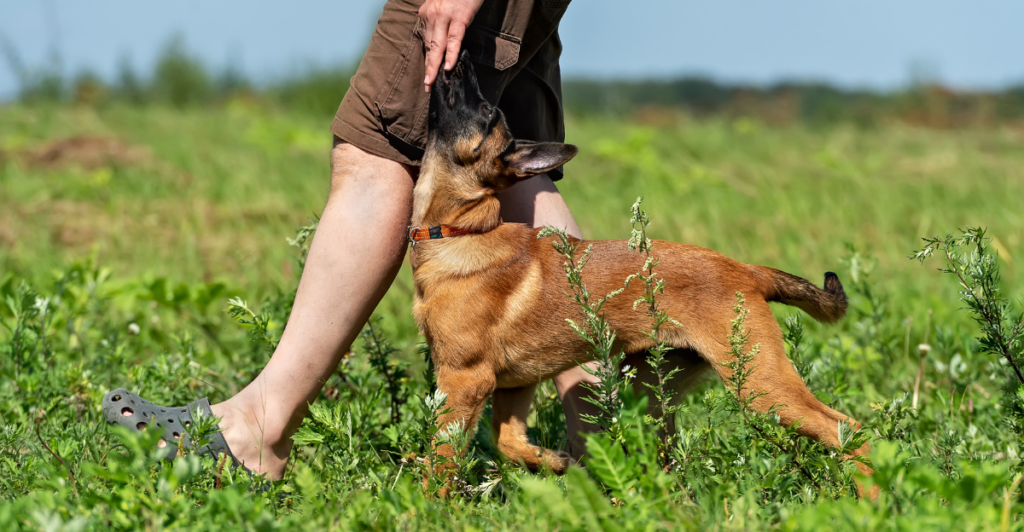
Puppies have short attention spans and a lot of energy, which means that their training sessions should be short and sweet. Lengthy training sessions can overwhelm them, causing boredom, distraction, or even behavioral issues like increased nipping or disinterest in treats. Instead of overloading your puppy with too much information at once, focus on brief, engaging sessions that target one or two tasks at a time.
Give your pup the time to absorb what they have learned, and this will prevent burnout. Remember, consistency and patience are more effective than marathon training. Keeping sessions short and positive ensures your puppy stays excited for training sessions.
4. Skipping Training Treats
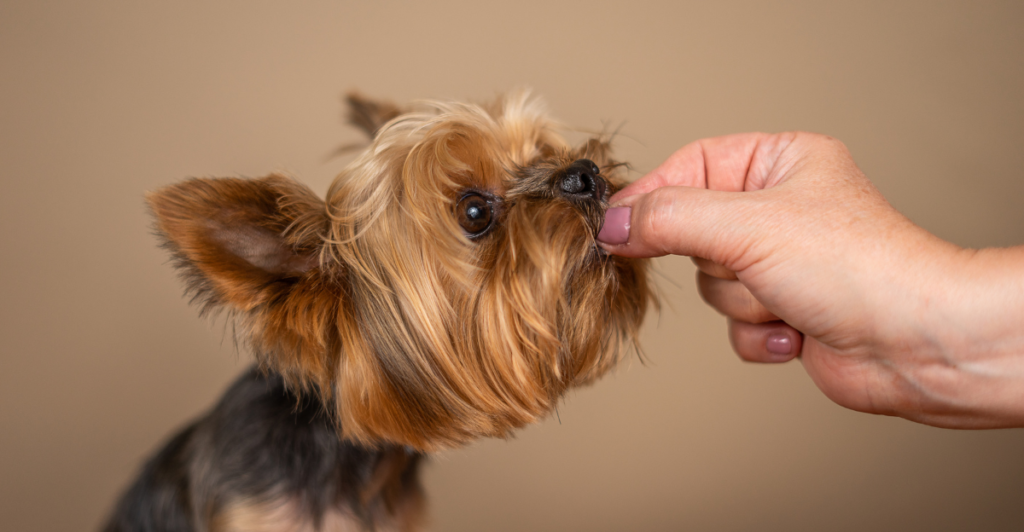
Treats might seem simple when training your pup, but they can make a big difference in how well your training works for food-driven puppies, as they create a clear connection between good behavior and rewards. Without treats, your puppy may struggle to understand what actions are being reinforced, leading to slower progress and frustration.
To maximize effectiveness, use small, high-value treats that are easy to consume quickly during training sessions. Pair treats with verbal affirmations like “good” or “yes” to reinforce positive behaviors immediately. Treats shouldn’t be the only positive reinforcement you use; they work well with other forms.
5. Repeating Commands
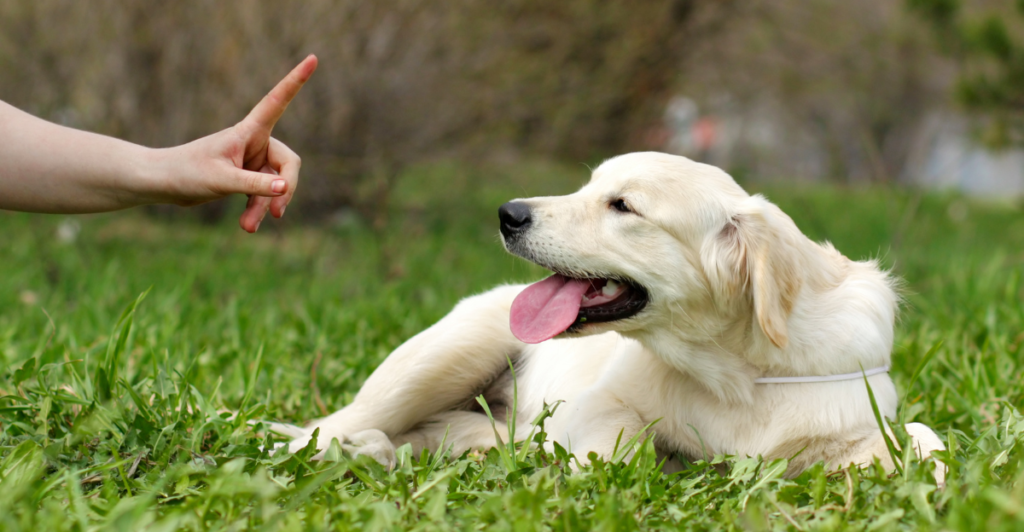
Repeating commands helps with reinforcement, but they do the opposite. When you repeat a command multiple times, your puppy may learn to ignore it or assume it only needs to respond after hearing it several times. This undermines the effectiveness of training and reduces their responsiveness. Instead, focus on saying the command clearly and once, then give your puppy time to process and respond.
If they don’t respond to your command, try guiding them toward what they should be doing instead of repeating it. Don’t forget to use positive reinforcement when they do follow your command.
6. Working While Frustrated
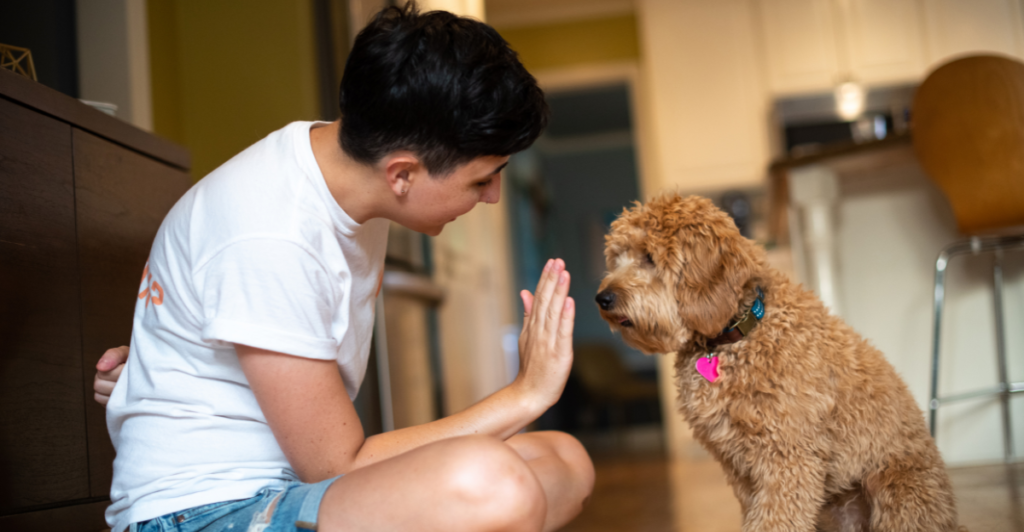
Training a puppy takes a lot of time and patience to make training fun for you and your puppy. Dogs are highly attuned to their handler’s emotions, and your frustration can inadvertently stress them out or cause them to shut down during sessions. When frustration sets in, you must step back, reset your mindset, or pause the training entirely.
Focus on positive reinforcement and achievable tasks to rebuild your dog’s and your own confidence. Remember, training should be fun, not a chore.
7. Relying Only on Vocal Commands
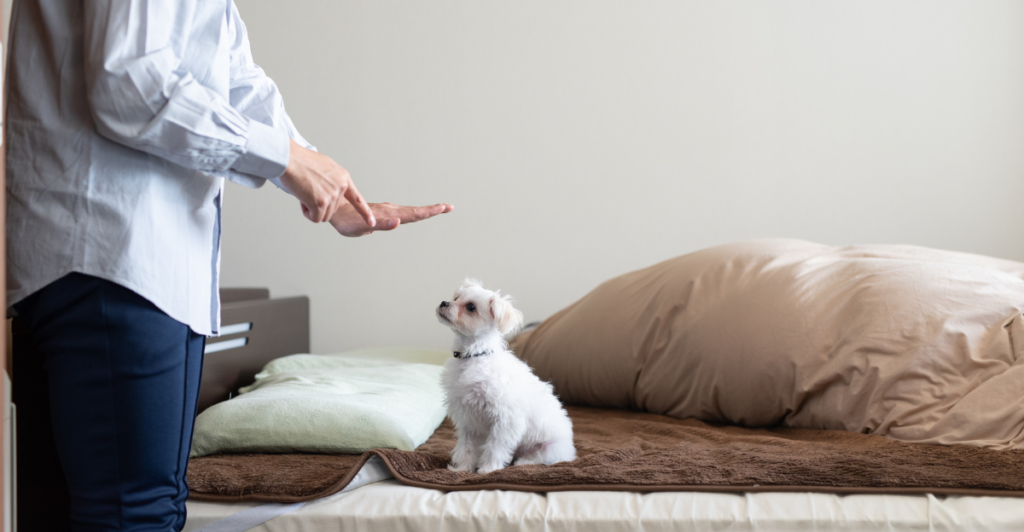
Pups don’t understand what you say at first, and starting with vocal commands will confuse them. Dogs are naturally skilled at reading body language and often respond more quickly to physical gestures than verbal cues, especially in noisy environments or when they are distracted. Using vocal commands along with clear hand signals or gestures will help strengthen the communication and also give them a little bit more reinforcement.
Using the verbal command “sit” with a downward hand motion helps your puppy associate the action with both cues. Over time, this dual approach builds stronger responses and ensures your puppy understands commands even if one method fails.
8. Forgetting Socialization
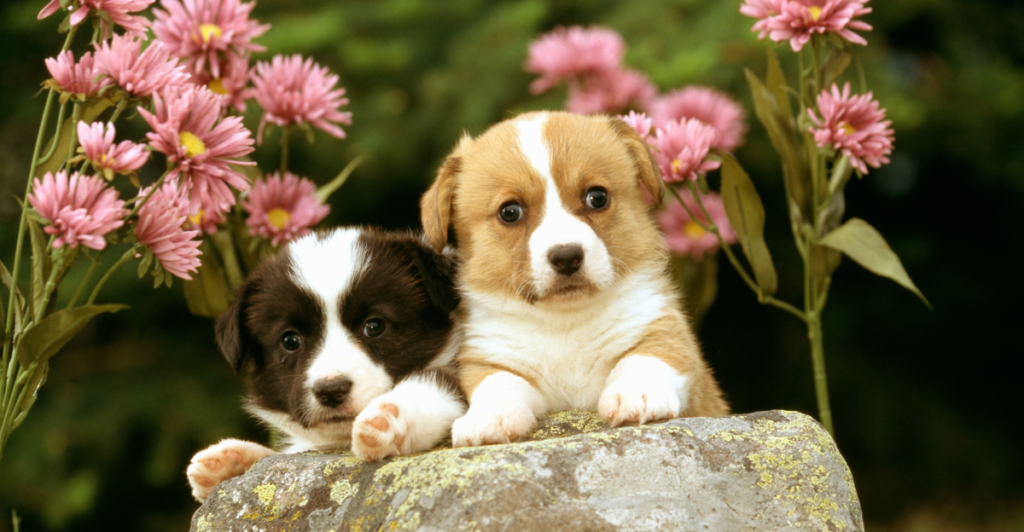
Pups thrive on socialization, and between 3 and 16 weeks of age, they are most receptive to new experiences, environments, and interactions. Neglecting to expose your puppy to various people, animals, sounds, and surfaces during this time can result in fearfulness, anxiety, or aggression as it grows.
Having your pup socialize helps build its confidence and makes it feel comfortable in various environments without getting anxious. By introducing your puppy to new stimuli in a controlled and positive manner, you set the foundation for a well-adjusted adult dog that thrives in the modern world.
9. Unrealistic Expectations
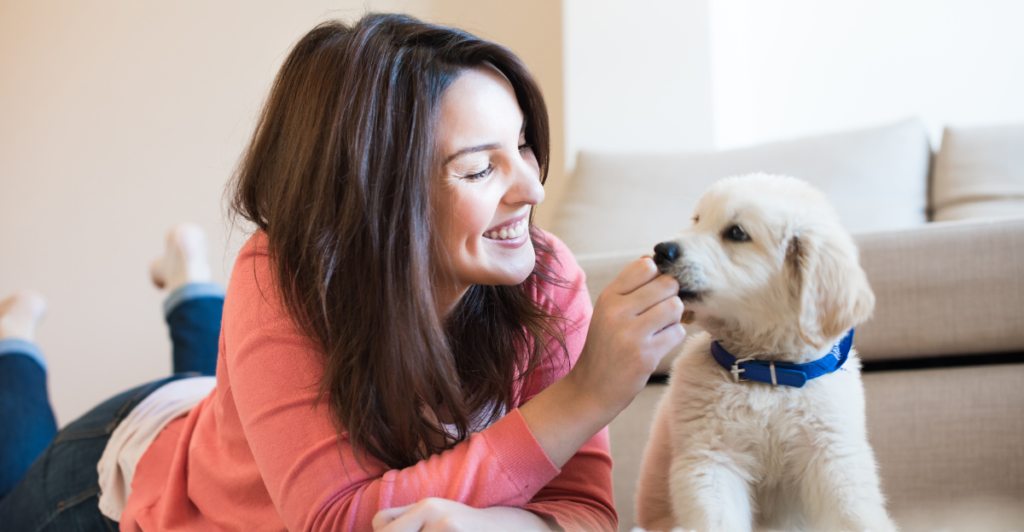
Having an idea in your head of what training should be like can have more of a negative effect than a good one. Even comparing one dog’s training to another can make you negative. Puppies, like humans, learn at different rates depending on their personality, age, and prior experiences. Expecting perfection or demanding advanced behaviors too soon can overwhelm your pup and strain your relationship.
Set achievable goals based on your puppy’s abilities and celebrate small victories. Adjusting your expectations to align with your dog’s unique needs fosters a positive training environment and strengthens the bond between you and your furry companion.
Explore more of our trending stories and hit Follow to keep them coming to your feed!

Don’t miss out on more stories like this! Hit the Follow button at the top of this article to stay updated with the latest news. Share your thoughts in the comments—we’d love to hear from you!







